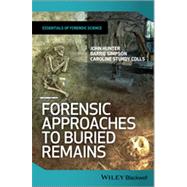The field of forensic archaeology has developed over recent years from being a branch of conventional archaeology into a well-established discipline in its own right. Forensic Approaches to Buried Remains takes an innovative approach to the subject by placing the role of the forensic archaeologist within the wider forensic environment; it identifies new areas of interdisciplinary research and practice, and evaluates practical difficulties.
The authors see this book as a reflection of the subject’s development, and as a knowledge base for the next generation of forensic archaeologists. Areas covered include:
- Search logistics, integration and specialist search scenarios
- Levels of confidence in site search and elimination
- Urban and rural landscape reconstruction in both short and long term cases
- The integration of cadaver dogs and earth-moving machinery
- The recovery of multiple evidence types
- Sampling strategies, spatial relevance and dating
- Multiple burial scenarios
As part of the Essential Forensic Science book series this book will provide students and practitioners alike with an invaluable resource outlining both the major developments in the discipline, as well as original approaches to the search for, and recovery of buried remains.








